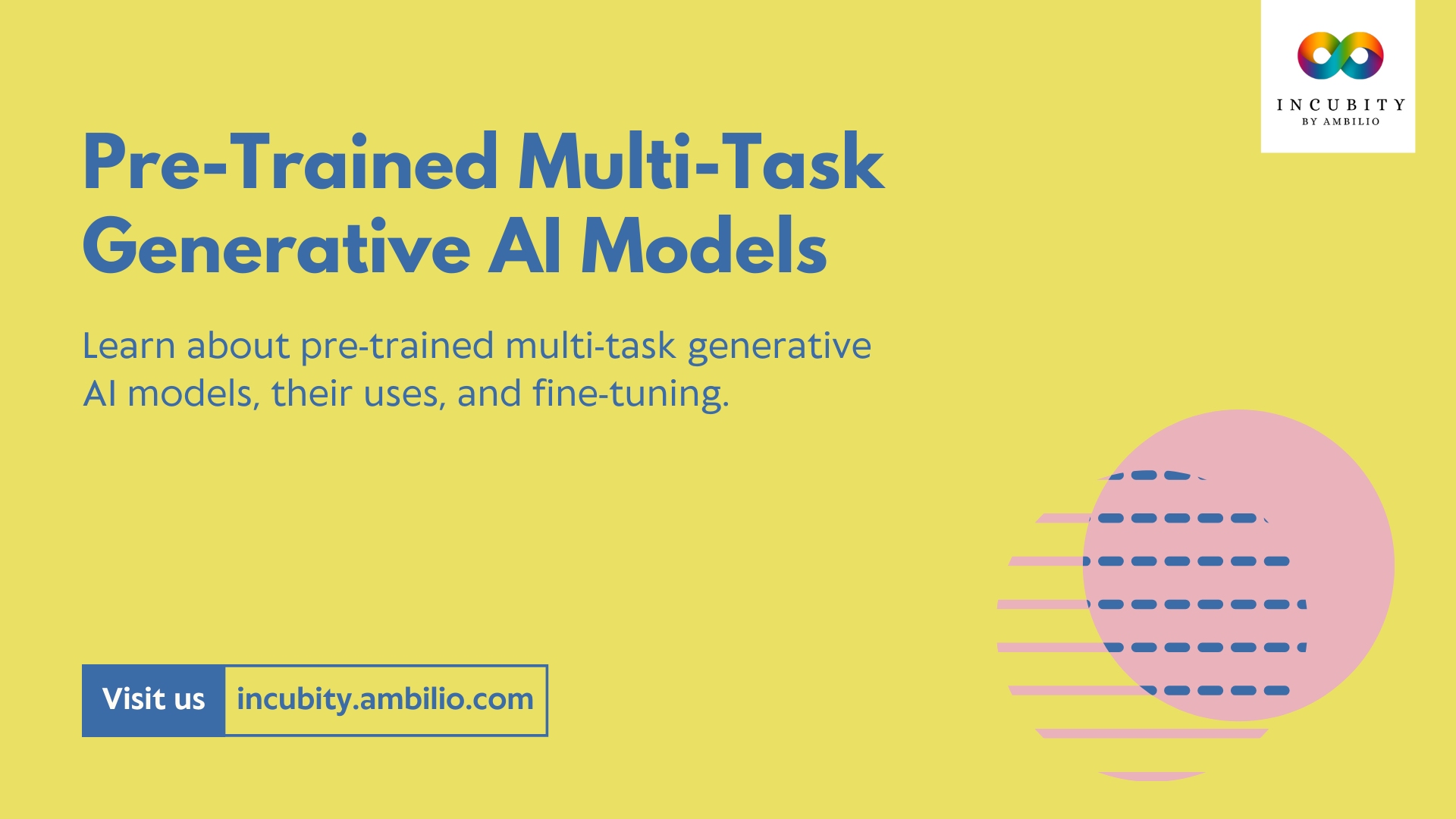Artificial intelligence (AI) has made tremendous strides over the past decade, largely thanks to the development of sophisticated machine learning models. Among these, pre-trained multi-task generative AI models, also known as foundation models, have emerged as powerful tools with the ability to handle a wide array of tasks. These models are designed to understand, generate, and transform data across various domains, making them incredibly versatile and valuable in numerous applications.
Understanding Pre-Trained Models
Pre-trained models are AI systems that have been trained on extensive datasets before being deployed for specific tasks. The pre-training phase involves exposing the model to a vast and diverse range of data, enabling it to learn patterns, structures, and features inherent in the data. This foundational knowledge allows the model to perform well across multiple tasks without needing to be retrained from scratch for each new task.
The primary advantage of pre-trained models is their efficiency. By leveraging knowledge acquired during the pre-training phase, these models can be fine-tuned with relatively small, task-specific datasets, significantly reducing the computational resources and time required for training.
The Multi-Task Capability
Multi-task learning refers to the ability of a model to handle several tasks simultaneously or sequentially without requiring extensive retraining for each new task. Pre-trained multi-task generative AI models excel in this area. They can perform various functions, such as generating text, answering questions, summarizing content, and even assisting with coding. This multi-task capability stems from the comprehensive understanding and representations these models develop during their pre-training phase.
For instance, OpenAI’s GPT (Generative Pre-trained Transformer) series, including GPT-3 and GPT-4, are exemplary multi-task models. These models can generate human-like text, translate languages, provide conversational responses, and more, all based on the same underlying architecture.
Generative Nature
The term “generative” refers to the ability of these models to create new content. Unlike traditional AI models that focus on classification or prediction tasks, generative models can produce novel data. This includes generating coherent and contextually appropriate text, creating realistic images, composing music, or even writing code. The generative capabilities of these models open up a plethora of applications, from creative industries to technical fields.
Advanced AI Techniques
Foundation models utilize advanced AI techniques, particularly deep neural networks. These networks consist of multiple layers of interconnected nodes (neurons) that process and transform data. Deep learning, a subset of machine learning, enables these networks to learn hierarchical representations of data, capturing complex patterns and relationships.
Transformer architectures, a type of deep neural network, are particularly noteworthy in the context of generative AI models. Transformers, such as those used in the GPT series, excel at handling sequential data and capturing long-range dependencies, making them well-suited for natural language processing (NLP) tasks.
Key Characteristics of Pre-Trained Multi-Task Generative AI Models
- Pre-Trained: These models undergo extensive training on large datasets, allowing them to acquire a broad knowledge base.
- Multi-Task: They can perform a variety of tasks without the need for extensive retraining, making them highly adaptable.
- Generative: They can create new content, such as text, images, or code, rather than merely classifying or predicting.
- AI Models: They leverage advanced AI techniques, particularly deep neural networks, to process and generate information.
Examples of Pre-Trained Multi-Task Generative AI Models
Two notable examples of pre-trained multi-task generative AI models are OpenAI’s GPT series and EleutherAI’s GPT models.
- OpenAI’s GPT Series: The GPT models have seen significant improvements with each iteration. GPT-3, for instance, boasts 175 billion parameters, making it one of the largest and most powerful language models available. It can generate human-like text, translate languages, summarize articles, and more, demonstrating its versatility and generative prowess.
- EleutherAI’s GPT Models: These models, developed by the EleutherAI community, are open-source alternatives to OpenAI’s GPT models. They aim to provide similar capabilities and performance, promoting transparency and accessibility in the development of large-scale AI models.
Fine-Tuning Pre-Trained Models
Fine-tuning is the process of adjusting the parameters of a pre-trained model to optimize its performance on a specific task or set of tasks. This process involves several techniques:
- Transfer Learning: This technique involves transferring the knowledge gained from the pre-training phase to the fine-tuning phase. The model is fine-tuned on a smaller, task-specific dataset, leveraging its pre-trained knowledge to improve performance.
- Multi-Task Learning: This approach involves fine-tuning the model on multiple related tasks simultaneously. By sharing knowledge across tasks, the model can improve its performance on each individual task.
- Parameter-Efficient Fine-Tuning: Techniques like adapters, low-rank adaptation, and prompt-tuning aim to fine-tune models with minimal changes to their parameters. This makes the fine-tuning process more efficient and less resource-intensive.
Challenges and Opportunities
Fine-tuning pre-trained multi-task generative AI models presents both challenges and opportunities. One significant challenge is the risk of overfitting, where the model becomes too specialized to the fine-tuning dataset and loses its generalization capabilities. Ensuring the model retains its broad knowledge while optimizing for specific tasks requires careful balance and technique selection.
However, the opportunities are immense. Fine-tuned generative AI models can revolutionize industries by automating complex tasks, generating creative content, and providing advanced decision-making support. They can assist in fields as diverse as healthcare, finance, education, and entertainment, driving innovation and efficiency.
Final Words
Pre-trained multi-task generative AI models represent a significant leap forward in artificial intelligence. By combining extensive pre-training with multi-task capabilities and generative potential, these models offer unparalleled versatility and performance. As the field continues to evolve, the development and fine-tuning of these foundation models will undoubtedly unlock new possibilities, transforming how we interact with and benefit from AI.



